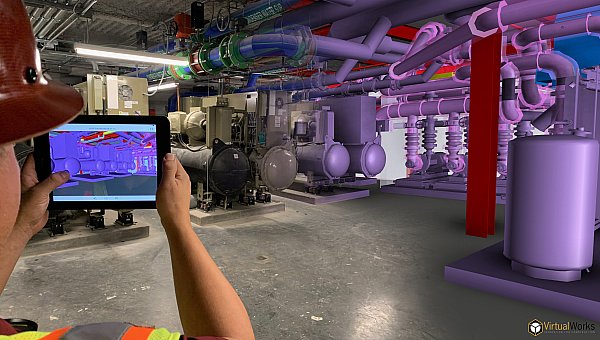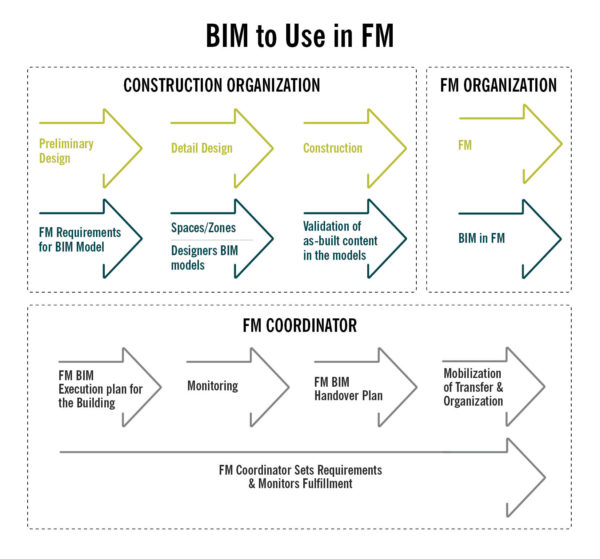News
Food & Beverage: Leveraging BIM for Facility Management Solutions
August 6, 2020

An emerging field in the AEC industry is the use of building information modeling (BIM) data and information to increase the efficiency of facility management (FM) solutions. Many owners already rely on BIM to save in costs and time during the design and building process, but does that data translate into meaningful information during facility operations?
The food and beverage industry is competitive, and any opportunity to decrease operating costs can translate into an advantage in the marketplace and higher profit margins. This developing technology can exponentially increase efficiency in a wide range of FM activities, but potential challenges can quickly render the process impossible to implement or overwhelming to maintain. A general contractor familiar with BIM and how to integrate FM-specific data can help navigate the interoperability of the two systems, unlocking untapped potential.
BIMs with FM applications is a virtual guide to the building space, monitoring facility operations and assets 24/7. Mobile access to BIM and its integrated data allows the FM team to track facility components, identify inefficiencies in operations, and enable quick response to excursion alerts. Digital tags within BIM connect to a unique identifier on the floor, allowing a full background report on any asset in the system. This visual tool allows the FM team to quickly locate an asset’s exact location in the building. The model also captures how systems connect and relate to one another, showing zones serviced by common components. Digital asset records permit efficient updates of equipment condition assessments, upgrades, and manpower calculations.

When you leverage BIM data, you can achieve greater accuracy in model assumptions. This provides a reliable diagnostic, analytic approach to quickly replicate, investigate and verify a variety of concepts and scenarios. Real-time thermal analysis and manpower calculations help a facility quickly adjust to changing safety regulations and market conditions. Accurate equipment inventories can directly impact the quality of executive decisions and emergency response.
A study by the National Institute of Standards and Technology estimated $10.6 billion was used by facilities in validating, replicating, and looking for data during the operations and maintenance phase (NIST GCCR 04-867). When considering all stakeholders in the capital facilities industry (architects, contractors, product suppliers, and owners) that total increases to $15.8 billion. Efficiency loss can be tied to manual reentry of data, duplication of business functions, and the reliance on paper-based systems. This waste of resources leads to spending time avoiding problems, filling gaps in information, and mitigating delays in operations and projects.
A potential solution to this exorbitant and unnecessary waste is to maintain a comprehensive, accurate database providing a seamless exchange of electronic data. This means keeping a database that is both accessible and easy to maintain, fully connected to the operations and maintenance of the facility.

A major goal of BIM models and FM is to take the risk and unknowns out of buying, building or modifying manufacturing systems, using diagnostic and analytic tools that predict the capacity and ability of your current or future system. The owner can successfully pinpoint what’s possible within their current operation through proactive technical insight and then quickly replicate, investigate and verify a variety of scenarios that can impact the performance of their business. Owners are gaining more understanding, in a last-mile fulfillment world, that BIM models and FM keeps distribution facilities and food processing plants from breaking down, keeping the supply moving to the end consumer.
Today’s food distribution facility is a complex integration of technology, machinery and staff. Facility managers are tasked with overseeing this high-demand system, ensuring that all elements achieve optimal performance. FM systems integrated with BIMs take the risk out of buying, building or modifying operations.
To read the full article by Bill Moultrie, Project Executive, published in Food Logistics, click here: https://bit.ly/3fwFbHm
Learn how our Virtual Design and Construction team can help you build smarter, better facilities.
